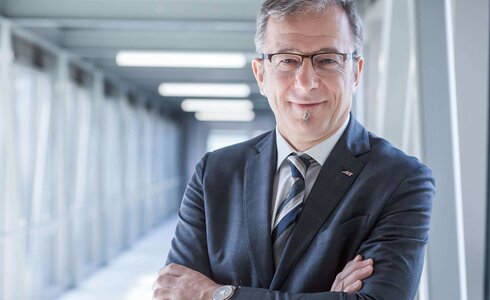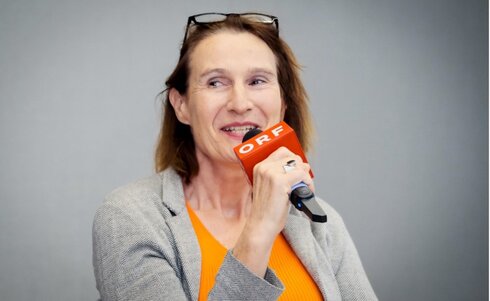Reflections on Acquiring Media Literacy to Safeguard our Democracies
Last January, drawing on the views of over 1,400 global risks experts, policy-makers and industry leaders surveyed in September 2023, the World Economic Forum’s Global Risks Report 2024 put misinformation and disinformation on the number one spot of global risks for the next two years and on the number five spot for the next ten years, following four risks connected to climate change and staying in front of ‘adverse outcomes of AI technologies’ (number six for the ten-year outlook) and ‘cyber insecurity’ (4th in the two-year and 8th in the ten-year outlook).
The importance of this topic in the short term is no surprise, as in 2024, globally, more voters than ever in history will head to the polls. At least 64 countries and the European Union, about 49 % of the global population, will hold national elections that will have effect for years to come.
In the current geopolitical climate, this situation leaves a lot of people who hold democracy dear in a cold sweat, as voting events like the Brexit referendum and the 2016 US election have shown the potential influence of mis- and disinformation.
In its 2018 ‘Action Plan against Disinformation’ the European commission stated: “To increase public awareness and resilience, the Commission will further step up its commitment and current activities in relation to media literacy to empower Union citizens to better identify and deal with disinformation. Member States should rapidly implement the provision of the revised Audio-visual Media Service Directive requiring them to promote and develop media literacy skills.”
Since then, it has enshrined this further in the Code of Practice on disinformation for online platforms (strengthened in 2022), the European Digital Media Observatory (EDMO) network and project funding under the Creative European Programme.
Media literacy isn’t new. At least since ancient times, innovations in media technology have gone hand in hand with critical reactions. According to Plato in Phaedrus, Socrates already predicted the rise of our current disinformation challenge, as to his mind every written word is just passed along do all sorts of readers (those who understand it and those who aren’t interested in it).
And when it is misused, it can only be helped by its author, because it cannot protect or help itself … Strong words spoken by Socrates, indeed. Moreover, in The Republic Socrates also advises on what mythical stories to use in education, because not every story is virtuous, and children are easily influenced.
Almost 2,400 years later, we are still trying to reap the benefits of information, communication, media and (digital) technology while trying to navigate the risks they entail. Although this is the core of media literacy, that doesn’t mean media literacy is an undisputed concept: It has evolved with ‘media technology, content and economics’ on the one hand, and with sociological and communications theory on the other. Historically, there are four primary theoretical positions:
- as a means to counter the negative effects of (mass) media in the media effects tradition, mainly focussing on solving problems by educating children and young people,
- as a way to counter the hegemonic power of mass media in the ‘critical cultural studies’ tradition, pulling back the curtain on the political economy of the media to help audiences become capable of resisting dominant discourses through oppositional meaning-making, countering injust representations and offering non-mainstream independent and diverse productions,
- as a way to recognize the structure and constructed nature of media messages in the rhetorical, structuralist and poststructuralist traditions, practicing an inquiry approach to media, to shift the perspective on the media environment to assess what is gained and lost through our uses of media technologies in order to act more strategically about media use,
- and as a way to acknowledge the role of play, identity, voice, and subjectivity in the practices of consuming and creating media in the American cultural studies tradition, engaging learners through the use of tools for accessing and responding to popular culture resulting in lifelong learning skills.
Other frameworks try to guide practice more than theory: They put the subjects of media literacy (‘language’, ‘representation’, ‘production’, and ‘audiences’) at the forefront, or the fact that media literacy can be filled in in a protectionist or emancipatory way on the one hand and geared towards user engagement versus user disengagement with media on the other.
In Flanders, the northern half of Belgium, we have been working on this topic at Mediawijs, the Flemish Knowledge Centre for Digital and Media Literacy at IMEC vzw, since 2013. We have been assigned and funded by the Flemish Minister of Media to stimulate and coordinate media literacy in the Flemish community.
Looking back at these last ten years, we have some lessons learned, we would like to share.
1. Defining the competence:
In Flanders, we use ‘media wisdom’ as the term for digital and media literacy: the entirety of knowledge, skills and attitudes that enables citizens to use and understand digital technology and media to actively, creatively, critically, and consciously participate in our complex and changing digital and medialized world.
Four aspects are essential to this definition.
- The entirety of knowledge, skills, and attitudes: In this definition we are talking about a ‘competence’, the entirety of a specific competence, skills and attitudes, allowing you to act adequately in a given situation. This given situation is our complex and changing digital and medialized world which in practice, can be very different for every target group, every goal they try to reach, every medium they use and every context they do this in.
- Use and understand: As digitalization is a core transformation of our current society, using digital media and technology is inevitable. Therefore, digital and media literacy is not aimed at user disengagement with media, but at using it strategically, thoughtfully, and responsibly. To achieve that, understanding how they work and what their effects are on yourself, the people around you and society as a whole is quintessential to reflect on what needs to change.
- A moving target: Taking this last observation into account, this means that digital and media literacy is constantly shifting from day to day and context to context. Moreover, it’s a moving target, making giant leaps in focus together with technological innovations and societal changes.
- Digital and media literacy: All too often in policy or research people try to use or understand a difference between digital literacy and media literacy, and 30 years ago, this might have made sense. However, in times of converging media, digital and media literacy are two sides of the same coin.
Trying to pull the competences to access digital appliances and applications, to make content and productions with digital technology apart from seeing how information, media, data, communication and digital technology are used, what the consequences are, if the consequences are positive or negative and what you should change in your behavior, society or the media, and then trying to decide what is digital and what is media, is a totally artificial and unproductive process.
This means that the concept of digital and media literacy overlaps with (or perhaps contains) information literacy, media literacy, digital literacy, data literacy, privacy literacy, algo-literacy, AI literacy, cybersecurity literacy, etc.
2. Digital and media literacy interventions need to be tailored to every target group, goal, and context.
Yet, we often read statements claiming we need to make children discrn this and be resilient to that from an early age. In communications theory, you have the third person effect: Media have all kinds of effects, but just not on you. It’s other people who fall for them.
This effect seems to grow exponentially when we are referring to children as the other people. And, yes, lack of maturity, experience and competences do make children more vulnerable to certain aspects of digital technology and media. But this also means that we can only offer them age-appropriate digital and media literacy interventions and only expect age-appropriate digital and media literacy competences from them.
- The psycho-social development of children entails that they are ready for a certain level of abstraction and expertise. Competences are learned in layers and taught in a scaffolding manner. For instance, the minimum targets for 12-year-olds in Flemish formal education contains goals like: ‘With help, the pupil formulates a simple search question about a suggested theme and searches a number of digital and non-digital sources provided.’ This is still far from discerning through any number of self-searched media if any given statement is true or false.
- In sustainable development education, it has been recorded that problematizing a certain topic in primary school (e.g., connecting hunger to certain regions in the global south), does not result in young people engaging in solidarity in secondary schools, but causes avoidance of the topic altogether. When applying this to news, this would mean that problematizing news as possibly false in primary schools will probably strengthen news avoidance in secondary school instead of using it actively in a healthy and critical way.
3. A lot of interventions against mis- and disinformation are in themselves information-based:
debunking and fact-checking, prebunking, strategic communication campaigns, etc. We will, again, explain what is true to you or how media works and this will magically make you believe something else. Now, these methods do have some effect, especially for those who have questions or doubts and would just like to be informed. However, they ignore the skills and, especially, the attitudes that are pertained to a competence.
Believing in disinformation narratives and conspiracy theories often coincides with feelings of discrimination and disconnection that cause distrust in social institutions like the government, politicians in general, the media, scientists, etc. Addressing these emotions doesn’t (only) require good information, but mainly requires rekindling connections and learning how to recognize and regulate your emotional state. Social, emotional, or affective learning is essential to digital and media literacy, especially when tackling disinformation.
In conclusion, you may have already read between the lines: Digital and media literacy is far more complicated than doing a single workshop, providing some rules to recognize disinformation, or launching a single campaign. These interventions are important but their impact is not deep and structural. They have to be accompanied by a whole societal policy of providing digital and media literacy training and support to people of all ages in schools, libraries, youth care, and other social and cultural organisations.
Moreover, it builds on
- good education providing good reading comprehension skills and a thorough overall knowledge,
- a good social community supported by social and cultural organisations,
- a solid political democracy and media environment geared to provide transparency and stimulate trust in institutions.

Flemish Knowledge Centre for Digital and Media Literacy
Cyberbullying, online hate speech and disinformation rank high on Demeulenaere’s agenda, just like grasping the many opportunities offered by digital media to create, inform, and learn.
Setting up European partnerships and networks that allow digital and media literacy initiatives to learn from each other and cooperate is an important aim of Mediawijs, one which Demeulenaere fully supports.
OVE Presse

Eschenbachgasse 9
1010 Wien




